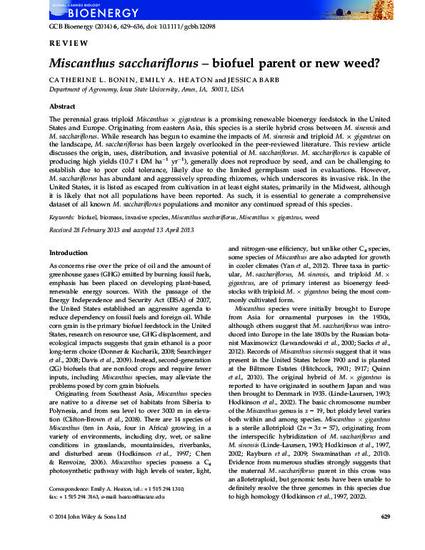
The perennial grass triploid Miscanthus × giganteus is a promising renewable bioenergy feedstock in the United States and Europe. Originating from eastern Asia, this species is a sterile hybrid cross between M. sinensis and M. sacchariflorus. While research has begun to examine the impacts of M. sinensis and triploid M. × giganteus on the landscape, M. sacchariflorus has been largely overlooked in the peer-reviewed literature. This review article discusses the origin, uses, distribution, and invasive potential of M. sacchariflorus. M. sacchariflorus is capable of producing high yields (10.7 t DM ha−1 yr−1), generally does not reproduce by seed, and can be challenging to establish due to poor cold tolerance, likely due to the limited germplasm used in evaluations. However, M. sacchariflorus has abundant and aggressively spreading rhizomes, which underscores its invasive risk. In the United States, it is listed as escaped from cultivation in at least eight states, primarily in the Midwest, although it is likely that not all populations have been reported. As such, it is essential to generate a comprehensive dataset of all known M. sacchariflorus populations and monitor any continued spread of this species.
Available at: http://works.bepress.com/emily-heaton/42/

This article is published as Bonin, C. L., Heaton, E. A. and Barb, J. (2014), Miscanthus sacchariflorus – biofuel parent or new weed?. GCB Bioenergy, 6: 629–636. doi:10.1111/gcbb.12098. Posted with permission.